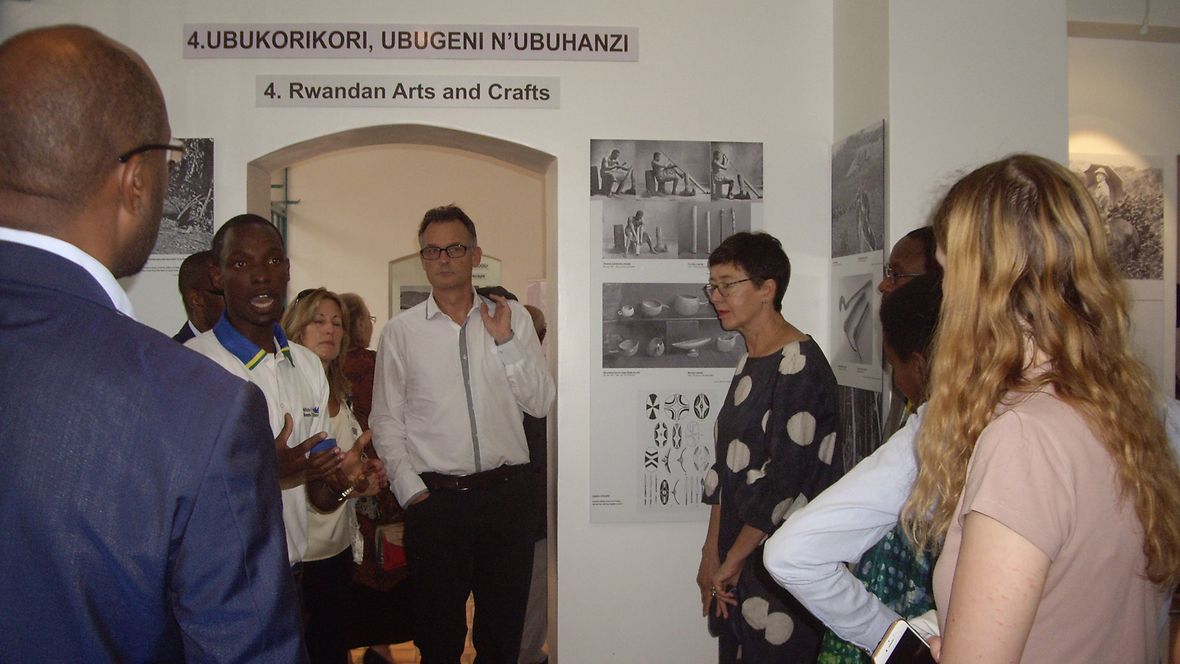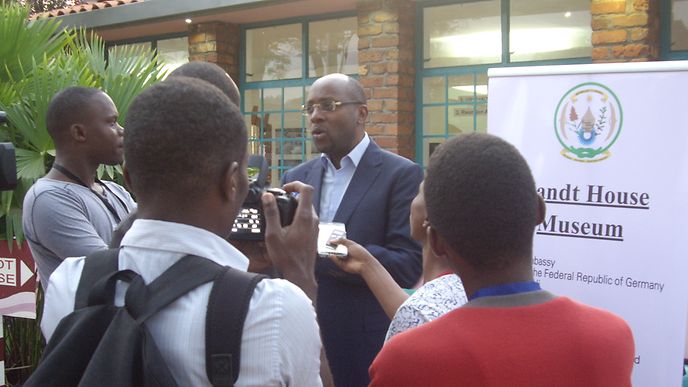The redesigned museum opened its doors to the public in time for Richard Kandt’s 150th birthday on 17 December 2017. Constructed in 1908, it is the last remaining architectural testimony to the German colonial era in Kigali.
The building of the redesigned museum was the residence of the “first German inhabitant” and founder of the Rwandan capital, Richard Kandt. The Kandt House Museum in the Rwandan capital Kigali showcases the history of Rwanda under the German colonial administration.
With the support of the Cultural Preservation Programme of the Federal Foreign Office, the conceptual conversion of the Kandt House into a museum on the history of Rwanda at the beginning of the 20th century was facilitated by the partnership association Partnerschaftsverein Rheinland-Pfalz/Ruanda e.V. in cooperation with the Institute of National Museums in Rwanda (INMR). After the building had already been spared demolition in 2003 with funds from the Federal Government and Land Rhineland-Palatinate, the cultural preservation funding was used to support a (photo) exhibition consisting of historical (photographic) material, as well as to equip the exhibition space with display cases, audio stations, light installations and information boards. The natural history exhibition previously on display here was relocated to the Museum of Environment in Karongi and the Kandt House and its external facilities were renovated. In addition to the establishment of a library and media room as well as the development and implementation of an audio-visual concept, a roofed museum café was built in the external area.

Following the redesign work, the museum now offers insights into traditions and life in Rwanda around the year 1900 and uses photos and other material to shed light on the impact of the colonial period on the population and the present day. The life and times of Richard Kandt, the Berlin Conference, the rush to the colonies on the part of adventurers, researchers and explorers, interactions between Rwandan and German actors and impacts on power and social structures are presented in modular exhibition units. In addition to the technical preservation of the colonial building, the emphasis is on examining and presenting this common colonial history, which inseparably links Germany and Rwanda, in a modern way.
A German-Rwandan cooperative partnership
German and Rwandan historians, museologists, artists and film makers jointly developed the concept for transforming the Kandt House into a modern museum. The partnership with the Institute of National Museums in Rwanda (INMR) for redesigning the Kandt House is helping to strengthen the national identity of Rwandan civil society, which is still coming to grips with the genocide.
The project partners are diverse and include the Institute of National Museums in Rwanda (INMR), the Ministry of Sports and Culture (Minispoc), the Partnerschaftsverein Rheinland-Pfalz/Ruanda e.V. (Jumelage), the German Embassy in Kigali, the Goethe-Institut, the Natural History Museum Mainz and the Kwetu Film Institute.
Promoted by: Cultural Preservation Programme of The Federal Foreign Office
Source: Ed. Federal Foreign Office

